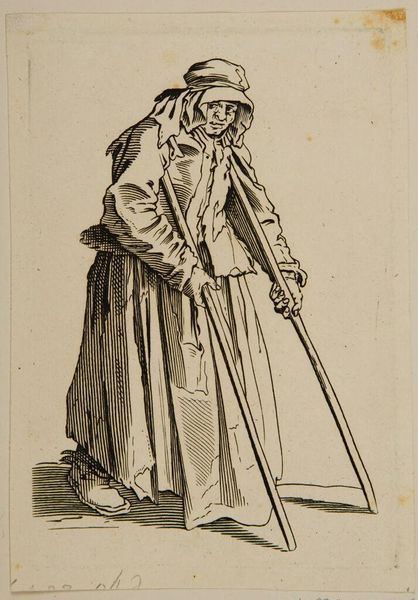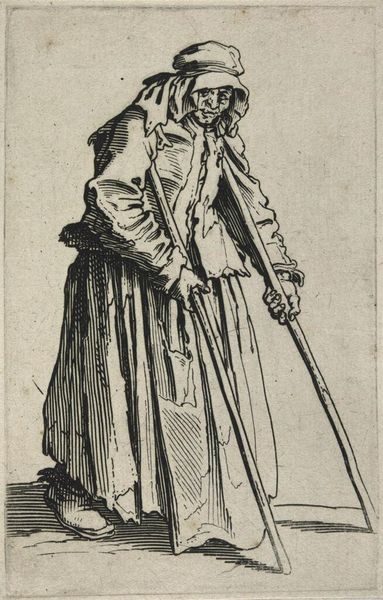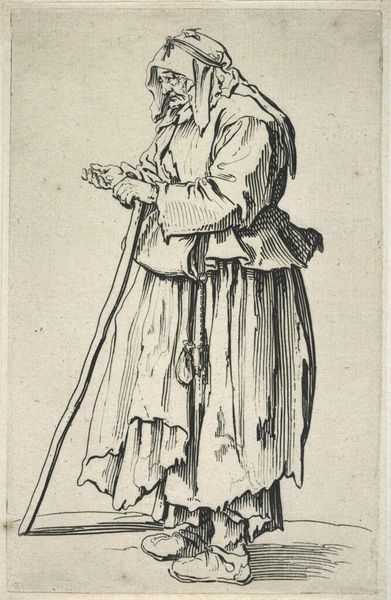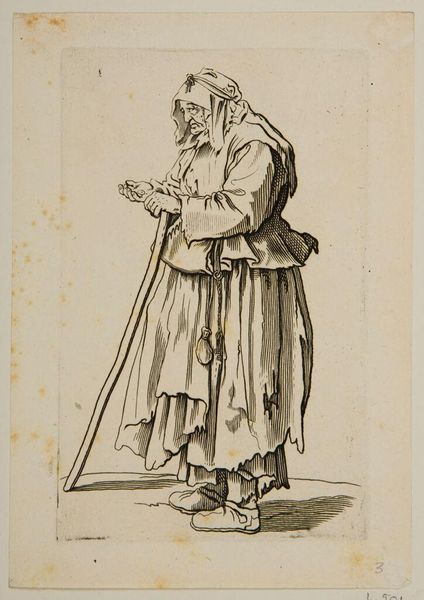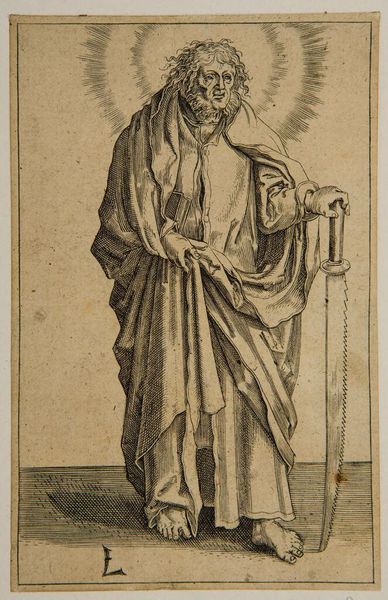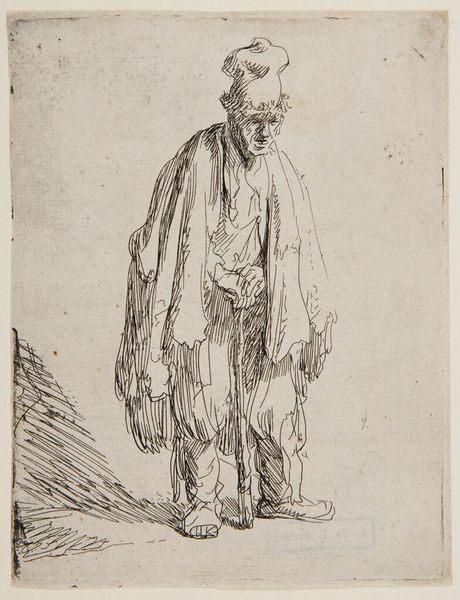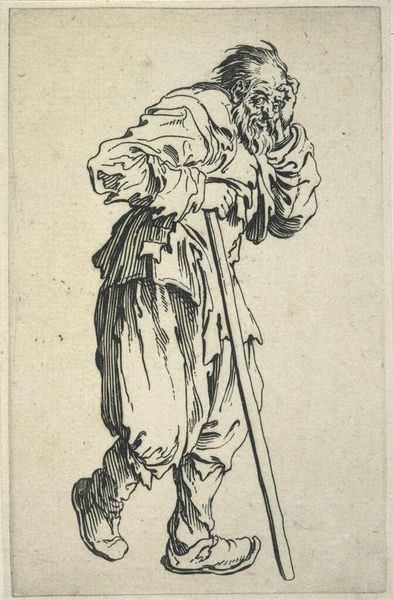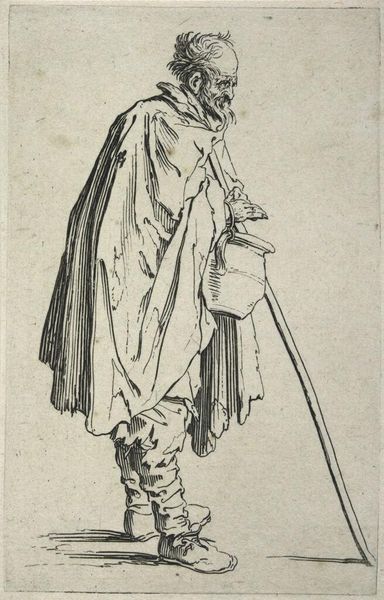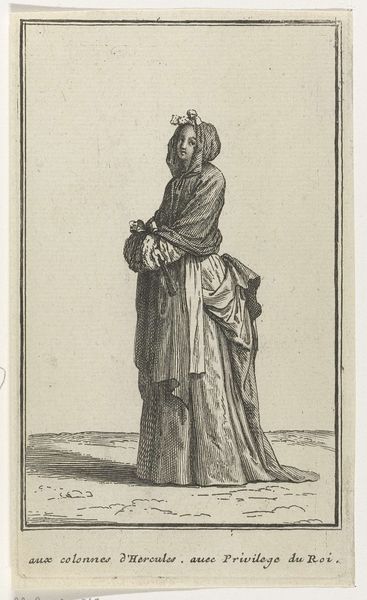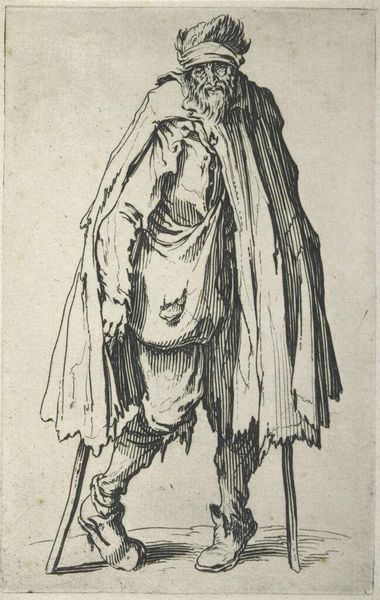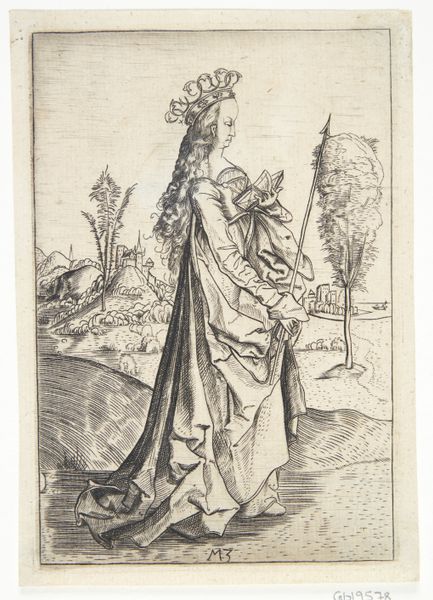
Dimensions: Plate: 14.2 Ã 9 cm (5 9/16 Ã 3 9/16 in.) Sheet: 15 Ã 9.9 cm (5 7/8 Ã 3 7/8 in.)
Copyright: CC0 1.0
Curator: This etching by Jacques Callot, held here at the Harvard Art Museums, presents a "Beggar Woman on Crutches." Editor: There's such starkness to the image—the figure seems burdened not just physically, but by something deeper, a kind of weariness etched into the very lines of her body. Curator: Callot, working in the early 17th century, was a master of capturing the everyday. Her crutches, her tattered clothes—they all speak to a life of hardship. Look how deliberately the lines render each detail of her garment. Editor: And those lines themselves! The medium, etching, lends itself so well to this subject. The way the acid bites into the plate, mirroring how poverty bites into a person's life. Curator: Absolutely. Consider the psychological weight of this figure—she represents a societal ill, a constant reminder of inequality and the fragility of fortune. It’s a powerful symbol. Editor: Yes, the materiality of it all—the labor involved in creating the plate, the accessibility of prints allowing wider distribution of this image… it’s a potent intersection of art and social commentary. Curator: Indeed. Callot's image invites us to contemplate the symbolic power of those deemed 'other,' forcing a dialogue about compassion and the human condition. Editor: It reminds us that even art's production is entangled in the societal fabric.
Comments
No comments
Be the first to comment and join the conversation on the ultimate creative platform.
